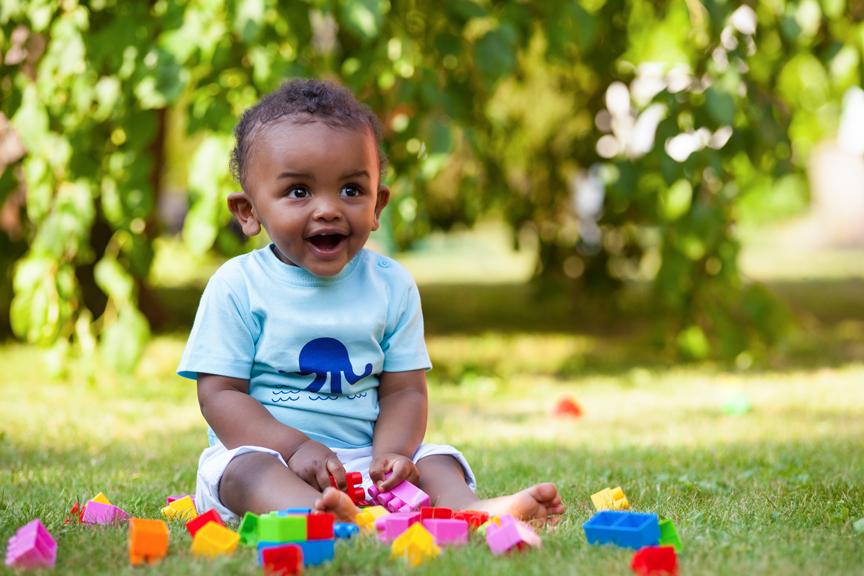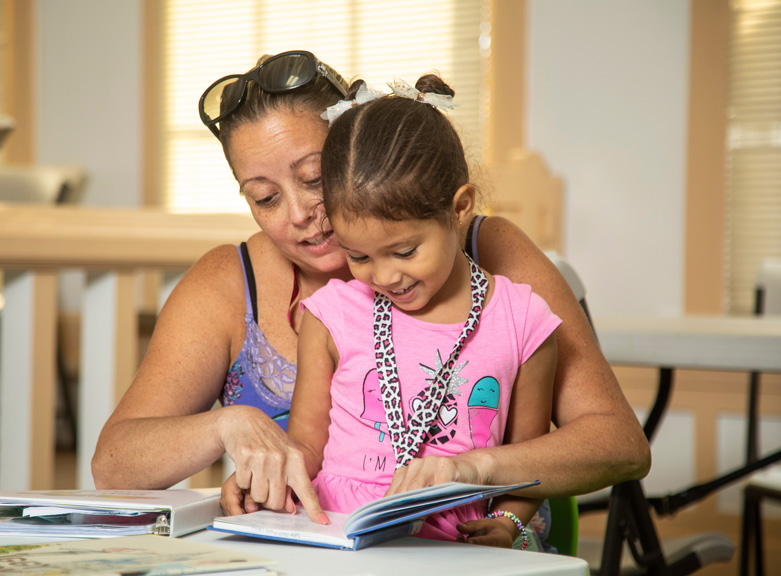Watch this video on how important physical touch is to your baby.
Watch this video on how reading to your child changes as they grow.
For more tips, see expert advice below.
No longer a baby
Furniture surfing is just one of the major milestones you can expect when your baby becomes a toddler.
Babies and children develop in all sorts of ways – including how they move their big muscles (arms and legs), and their small ones (fingers), as well as how they think and communicate, and show their love.

What can I expect?
Around their first birthday, your baby may be able to pull him or herself to a stand, stand alone or walk without support. They may also be able to put blocks in a cup or pick up items (like cereal) with their finger and thumb. Some toddlers this age can say some words and wave hi and bye.
By two years old, your active little one likely can throw a ball, kick a ball, jump up and down, and walk up steps. Your child may also be able to stack towers of four to six blocks and turn the pages of a book, say 50 words, name pictures, put words together and follow simple instructions. You child may even be able to put on and take off clothing and play pretend.
What about concerns?
It’s normal to have questions about your child’s development. One in four children in the United States are at risk for a developmental, behavioral or social delay, according to the U.S. Centers for Disease Control and Prevention. And if delays aren’t addressed early, they can impact a child’s success in – and enjoyment of – school.
“Every age group brings within itself new changes and skills required,” says Randee Gabriel, programs manager at 211 Palm Beach/Treasure Coast. “While a child may have no concerns at 6 months, this does not guarantee there will be no concerns at 25 months or 48 months, or beyond. Rescreening at each interval is imperative to identify these shifts and ensure healthy development over the long term.”
If you have questions or concerns about your child’s development, call 2-1-1 or use 2-1-1's chat online and ask for the Help Me Grow program. Help Me Grow services are free, including screenings, information and connections to resources. You also can visit HomeSafe online or call for a free screening at 561-383-9800. Both Help Me Grow and HomeSafe receive funding from Children’s Services Council of Palm Beach County.
For more information about toddler development, sign up or log in to EveryParent below.
Your amazing preschooler
As parents, we often hear the term developmental milestones and know it’s important that our children reach these markers at key moments of growth. But what exactly do child development specialists mean by that phrase?

All kids develop at their own rate
“First, it’s important to remember that every child is an individual,” says Randee Gabriel, programs manager at 211 Palm Beach/Treasure Coast. “There are no two children that will hit every milestone at the exact same time. Still, there are crucial cues to look for at each age.”
Gabriel explains children up to age 5 should reach milestones in how they play, learn, speak, act and move.
“This is because a young child’s brain develops incredibly quickly,” says Gabriel, adding a newborn’s brain is about a fourth the size of an adult brain. By age 3, the brain grows to 80 percent of adult size on its way to 90 percent by age 5.
So, what’s typical?
By 3 years old, most children can jump on one foot, copy lines and circles, name seven body parts and brush teeth with help.
Some 4 year olds can ride a tricycle, draw a person with three parts, use past tense and plurals, and follow three unrelated directions.
And at age 5, many children know how to use a swing, print some letters, speak sentences with more than five words and use opposites. Socially, they like to please their friends and learn how to follow rules.
If you have concerns that your child isn’t doing what other kids their age can do, don’t be afraid to ask for help. Call 2-1-1 or the chat online and ask for the Help Me Grow program. Help Me Grow services are free, including screenings, information and connections to local resources. You can also visit HomeSafe online or call for a free developmental screening at 561-383-9800. Both Help Me Grow and HomeSafe receive funding from Children’s Services Council of Palm Beach County.
For more about developmental milestones, sign up or log in to EveryParent below.
Older children and teens reach milestones, too
Up to age 5 is a period of astonishing physical, emotional and social growth for your child. Although it may seem like your first-grader was just taking his first steps, he’s now mastered the playground.
And your teen? She surprises you by not talking to you one day to asking your advice on colleges the next day. It can be a frustrating yet exhilarating time for children and their parents.
Here’s some insight from the U.S. Centers for Disease Control and Prevention on what’s normal for each stage of your child’s development:

Early middle childhood (6 to 8 years)
This is a critical time for children to develop confidence in all areas of life, such as through friends, schoolwork and sports.
Key developmental milestones:
- Showing more independence from parents and family
- Paying more attention to friendships
- Developing less focus on oneself and more concern for others
Late middle childhood (9 to 11 years)
During this time, children gain a sense of responsibility, along with growing independence. Also, physical changes of puberty may start.
Key developmental milestones:
- Forming stronger, more complex friendships and peer relationships.
- Becoming more aware of their body as puberty approaches. (Body image and eating problems may start around this age)
- Facing more academic challenges at school
Young teens (12 to 14 years)
At this age, teens make more of their own choices about friends, sports, studying and school.
Key developmental milestones:
- Showing more concern about body image, looks and clothes
- Focusing on themselves; going back and forth between high expectations and lack of confidence
- Showing more interest in and influence by peer group
Teenagers (15 to 17 years)
This is a time of change for how teenagers think, feel and interact with others, and how their bodies grow.
Key developmental milestones:
- Displaying more interest in romantic relationships
- Spending less time with parents and more time with friends
- Becoming more concerned about future school and work plans
- Being better able to explain their reasons for their choices
For more about teen milestones, sign up or log in to EveryParent below.
See More Articles Like This!
The EveryParent app and website are free resources for Palm Beach County families.
For more helpful parenting info just for you, sign up for EveryParent today!
